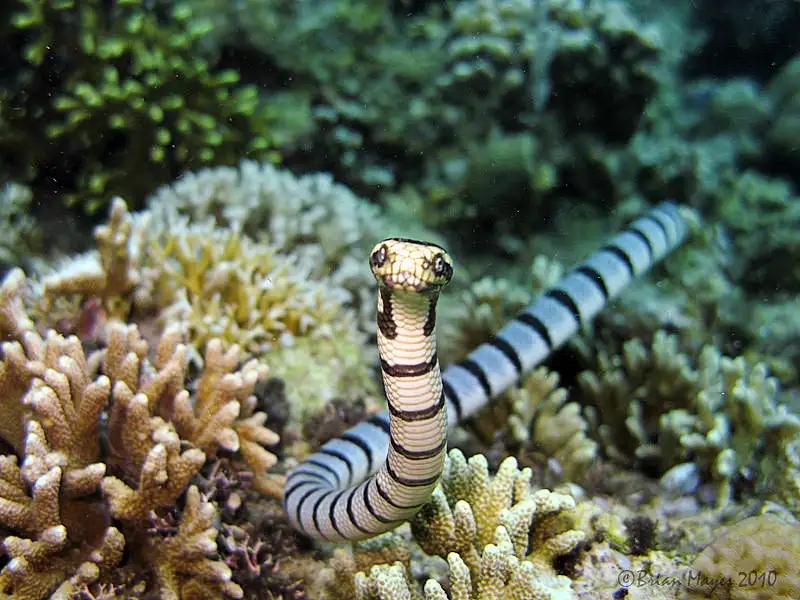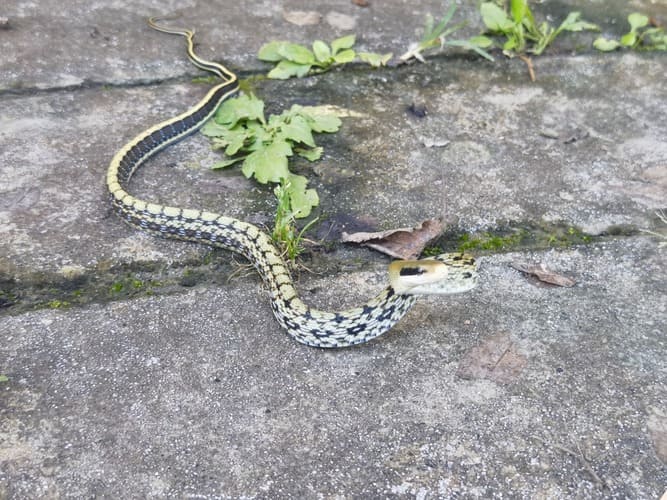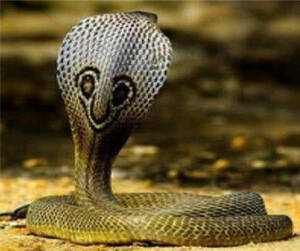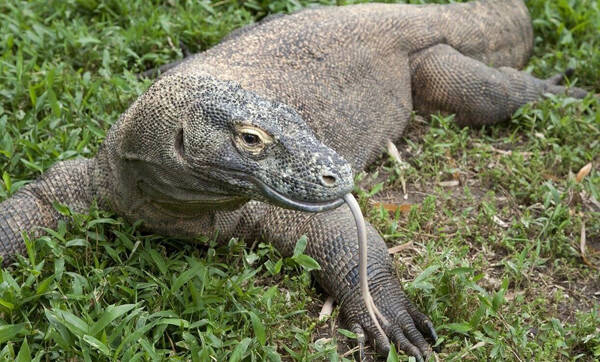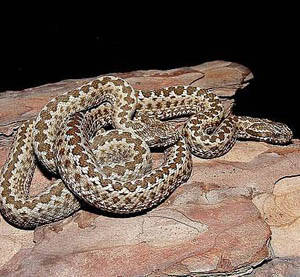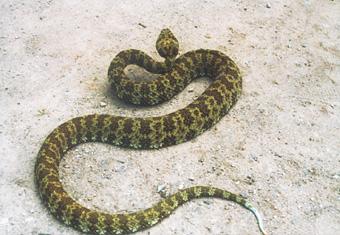Eryx miliaris
IUCN
LCBasic Information
Scientific classification
- name:Eryx miliaris
- Scientific Name:Eryx miliaris,Earthen stick, both ends even, red sand python
- Outline:Squamata
- Family:Pythonidae S.python
Vital signs
- length:30-100cm
- Weight:No verification information
- lifetime:10-16years
Feature
The neck is not clearly distinguished, the tail is short and blunt at the end
Distribution and Habitat
The world is distributed in Afghanistan, China, Iran, Kazakhstan, Mongolia, Pakistan, Russia, Turkmenistan, and Uzbekistan.
In China, it is distributed in Inner Mongolia, Gansu, Ningxia, and Xinjiang.
It mainly lives in deserts, the marginal areas where wastelands and oases meet, and lives in caves.
Appearance
The body length of sand pythons is generally no more than 1 meter, with unclear distinction between the head and neck, and a short tail with a blunt end. The eyes are small with upright pupils, and some eyes have degenerated. The back is gray, sandy brown or reddish brown with irregular black horizontal stripes, and the ventral surface is grayish white with scattered black spots. The whole body is covered with small scales, and the dorsal scales are even smaller, smooth or ridged, with less than 60 scales around the body; there are no lip pits on the snout scales and lip scales, and the scales under the tail are in a single row.
Details
The scientific name of the red sand python is Eryx miliaris. It is a relatively primitive small to medium non-venomous snake.
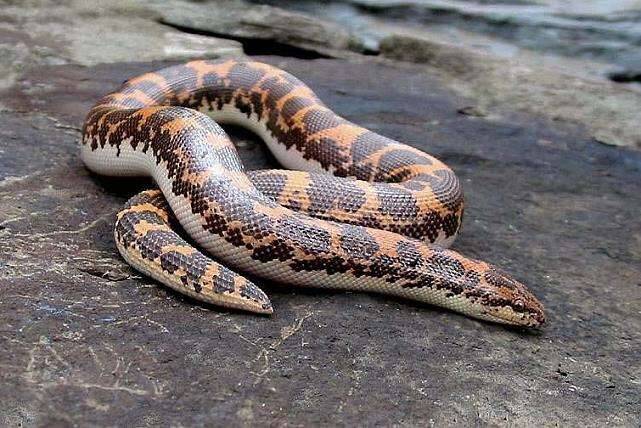
The red sand python is a common species abroad, but some subpopulations are on a downward trend. The number in China is unknown. Many taxonomists regard the red sand python and the oriental sand python as one species. Residents of desert areas call it "earth stick" or "two ends".
Red sand boas are typical desert snakes, living in vast sandy environments. They do not have the skills to climb high. Affected by the high temperature of the desert during the day, they can only hide in rat holes or dry and rotten Haloxylon ammodendron tree holes to escape the heat.
Red sand boas are important ecological balance maintainers in desert habitats. They mainly prey on rodents such as jerboas, gerbils and hamsters that harm sand plants, and they especially like jerboas. In order to deal with jerboas, they have a special set of skills to hunt prey. Red sand boas usually leave the cave before dawn. Due to poor eyesight, they can only rely on their keen sense of smell to follow the smell left by jerboas on the ground and track them to the rat holes. The cave where the jerboa temporarily lives is often a "dead end" with only a single hole, and there is no other way to get out of the world. Faced with the red sand python that is tracking them, they can only surrender.
If the red sand python is frightened when it goes out to hunt, it will immediately use the "earth escape technique" and crawl into the fine sand. Although they usually crawl slowly and clumsily, they can drill into the sand quickly and disappear in the vast sand within a minute or two. Even so, they are only buried in the shallow layer of 2 cm under the sand. If you look closely, you can still vaguely see the traces of the sand python crawling slowly under the sand. This is just a way for the sand python to avoid the enemy, and some people call it "sand veins."
In the harsh desert environment, the red sand python reproduces once a year. Unlike other pythons, the red sand python is viviparous, and the fertilized eggs develop directly in the mother's body. When it is born, it is already a living little python.
Before the millennium, the red sand python was very common in the desert areas of northwest my country and was the main snake distributed in the area. After the millennium, with the intensification of human interference activities, some habitats suitable for small animals in the habitat have been destroyed, and their population has also been seriously affected and has decreased sharply. In recent years, it has been listed as a second-level protected animal in my country.
Listed in Appendix II of CITES
Listed in the List of Terrestrial Wildlife with Important Economic and Scientific Research Values Protected by the State, issued by the State Forestry Administration of China on August 1, 2000.
Listed in the second level of the List of Wildlife with Important National Protection in China.
Protect wildlife and eliminate game.
Maintaining ecological balance is everyone's responsibility!

